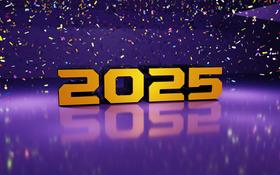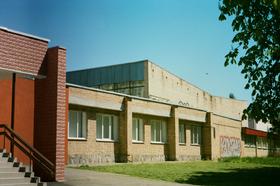For the 2025-26 school year, there are 7 public elementary schools serving 4,306 students in Boston, MA.
The top ranked public elementary schools in Boston, MA are Eliot K-8 Innovation School, Quincy Elementary School and Hurley K-8 School. Overall testing rank is based on a school's combined math and reading proficiency test score ranking.
Boston, MA public elementary schools have an average math proficiency score of 40% (versus the Massachusetts public elementary school average of 41%), and reading proficiency score of 35% (versus the 42% statewide average). Elementary schools in Boston have an average ranking of 3/10, which is in the bottom 50% of Massachusetts public elementary schools.
Minority enrollment is 82% of the student body (majority Hispanic and Black), which is more than the Massachusetts public elementary school average of 49% (majority Hispanic).
Best Public Elementary Schools in Boston, MA (2025-26)
School
(Math and Reading Proficiency)
(Math and Reading Proficiency)
Location
Quick Facts
Rank: #11.
Eliot K-8 Innovation School
(Math: 73% | Reading: 67%)
Rank:
Rank:
9/
Top 20%10
16 Charter Street
Boston, MA 02113
(617) 635-8545
Boston, MA 02113
(617) 635-8545
Gr: PK-8 | 792 students Student-teacher ratio: 13:1 Minority enrollment: 37%
Rank: #22.
Quincy Elementary School
(Math: 57% | Reading: 42%)
Rank:
Rank:
7/
Top 50%10
885 Washington Street
Boston, MA 02111
(617) 635-8497
Boston, MA 02111
(617) 635-8497
Gr: PK-5 | 733 students Student-teacher ratio: 11:1 Minority enrollment: 83%
Rank: #33.
Hurley K-8 School
(Math: 40-44% | Reading: 35-39%)
Rank:
Rank:
5/
Bottom 50%10
70 Worcester Street
Boston, MA 02118
(617) 635-8489
Boston, MA 02118
(617) 635-8489
Gr: PK-8 | 349 students Student-teacher ratio: 14:1 Minority enrollment: 78%
Rank: #44.
Quincy Upper School
(Math: 32% | Reading: 27%)
Rank:
Rank:
3/
Bottom 50%10
152 Arlington Street
Boston, MA 02116
(617) 635-8940
Boston, MA 02116
(617) 635-8940
Gr: 6-12 | 532 students Student-teacher ratio: 10:1 Minority enrollment: 94%
Rank: #55.
Match Charter Public School
Charter School
(Math: 23% | Reading: 22%)
Rank:
Rank:
2/
Bottom 50%10
1001 Commonwealth Avenue
Boston, MA 02215
(617) 232-0300
Boston, MA 02215
(617) 232-0300
Gr: PK-12 | 1,185 student Student-teacher ratio: 10:1 Minority enrollment: 98%
Rank: #66.
Melvin H. King South End Academy
(Math: ≤10% | Reading: ≤5%)
Rank:
Rank:
1/
Bottom 50%10
90 Warren Avenue
Boston, MA 02116
(617) 635-9976
Boston, MA 02116
(617) 635-9976
Gr: 2-12 | 134 students Student-teacher ratio: 4:1 Minority enrollment: 93%
Rank: #77.
Blackstone Elementary School
(Math: 8% | Reading: 6-9%)
Rank:
Rank:
1/
Bottom 50%10
380 Shawmut Avenue
Boston, MA 02118
(617) 635-8471
Boston, MA 02118
(617) 635-8471
Gr: PK-6 | 581 students Student-teacher ratio: 10:1 Minority enrollment: 96%
Boston, Massachusetts Public Schools (Closed)
School
Location
Quick Facts
Dorchester Preparatory Charter School (Closed 2013)
Charter School
75 Pleasant St
Boston, MA 02108
(617) 680-7830
Boston, MA 02108
(617) 680-7830
10 Fenwood Rd
Boston, MA 02115
(617) 635-8450
Boston, MA 02115
(617) 635-8450
Gr: K-5 | 205 students Student-teacher ratio: 12:1 Minority enrollment: 97%
Young Adult Center (Closed 2006)
Alternative School
Suffolk Superior Court-rm 705
Boston, MA 02108
(617) 725-8133
Boston, MA 02108
(617) 725-8133
Gr: 11 | 1 student
<麻豆果冻传媒 class='so-dt-title' id='faq'>Frequently Asked Questions
What are the top ranked public elementary schools in Boston, MA?
The top ranked public elementary schools in Boston, MA include Eliot K-8 Innovation School, Quincy Elementary School and Hurley K-8 School.
How many public elementary schools are located in Boston?
7 public elementary schools are located in Boston.
What is the racial composition of students in Boston?
Boston public elementary schools minority enrollment is 82% of the student body (majority Hispanic and Black), which is more than the Massachusetts public elementary schools average of 49% (majority Hispanic).
Which public elementary schools in Boston are often viewed compared to one another?
Popular comparisons of public elementary schools in Boston include: Quincy Elementary School vs. Eliot K-8 Innovation School, Blackstone Elementary School vs. Quincy Elementary School, Eliot K-8 Innovation School vs. Quincy Elementary School
麻豆果冻传媒 Articles

Texas Schools Enrollment Trends & Policy in 2025
Latest data and policy changes on Texas public school enrollment growth, funding, and virtual education in 2025.

Financial Aid & Hidden Costs in Public Schools
Learn about financial aid and hidden costs in public schools. Discover what parents should budget for beyond tuition-free education.

NYC Schools Still Most Segregated in 2025
Despite reforms, New York City schools remain the most segregated in the U.S. in 2025. Here鈥檚 what parents and educators need to know.
